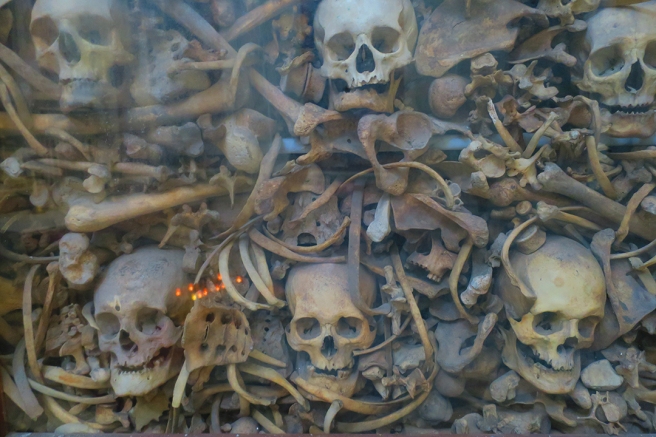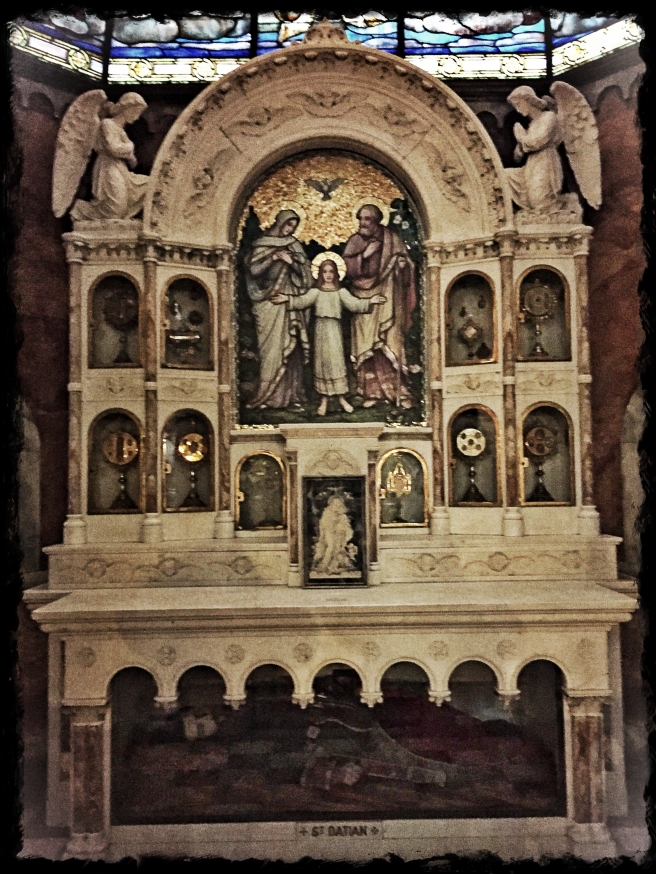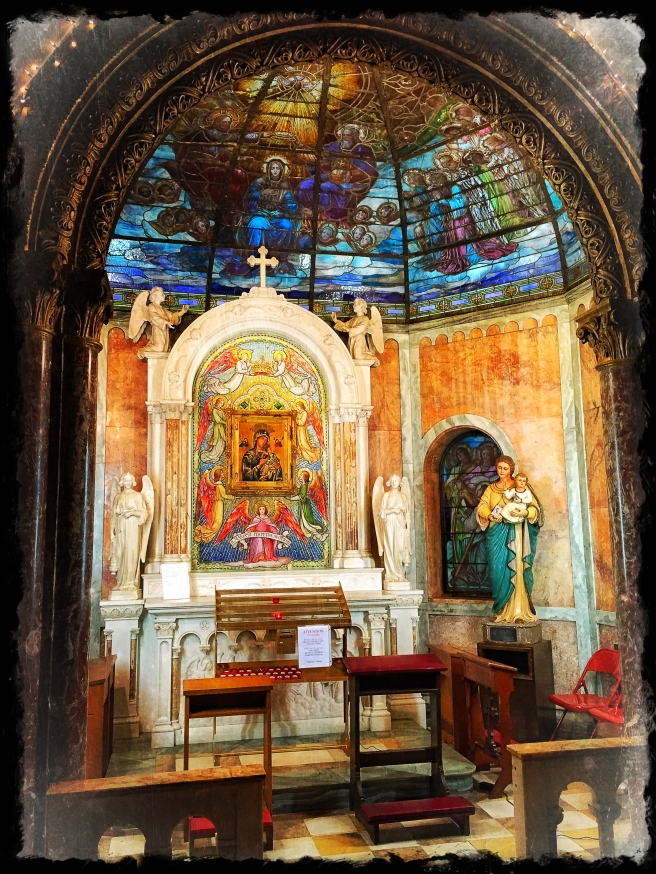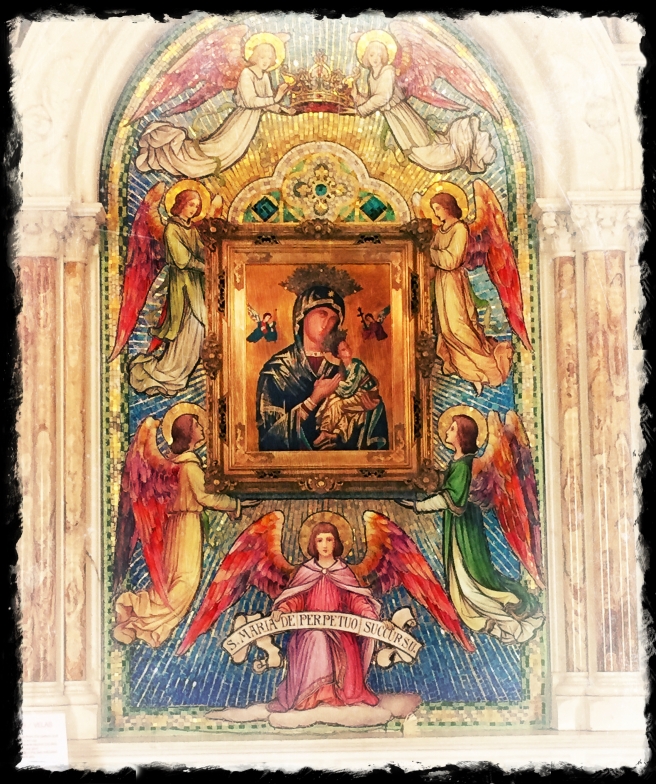
I had to pop by school today to drop off a paper (profs wanted both hard and electronic copies) so my friend A. and I decided to spend the afternoon at the Metropolitan Museum of Art in Manhattan. It’s a quick trip from the uni and we had a blast.
I had two goals going in: to see a 14th century pilgrim badge from the shrine of Thomas Beckett, and to see the reliquary of Mary Magdalene said to hold her tooth. For once, I was actually successful at seeing what I planned! My friend A. wanted to see the fashion exhibit “Manus x Machina,” so we did that too.
I’ve just finished taking a class on Medieval Pilgrimage and one of the last things we looked at was Thomas Beckett’s shrine at Canterbury. Pilgrim badges were mementos that pilgrims could purchase after having completed their pilgrimages (I have one from the shrine of Mary: the Loreto, in Prague from my trip there last summer). In this instance, these Canterbury badges are of special importance. Henry VIII ordered the original shrine to be melted down, its gold and gems once given in offerings to the saint stolen to enrich the coffers of the king. This was not uncommon. Protestants desecrated and destroyed many relics and shrines during their Reformation.(1) Badges like this one

provide the only visual reference we have for what Thomas Beckett’s shrine originally looked like. This was once one of the most well-known and popular pilgrimage sites in Europe. The original shrine was elaborate and lush. As you can see in the image above, it had its own attendant who, ostensibly for a fee, would pull a rope that lifted the top of the shrine to reveal the body (which, from the looks of the badge, was visible in situ in the shrine anyway). The shrine was also said to possess what was then the largest ruby in England if not Europe. It disappeared after the original shrine was destroyed. You can just see a mark for it in the badge above.
After looking at the pilgrim badge, I finally went to see Mary Magdalene’s relic. It’s stunning. I’m actually really, really bothered by the fact that it’s in a museum where proper veneration cannot be paid (I feel this about certain Pagan statues as well). It belongs in a church, but if it were in a church I probably wouldn’t have gotten to see it…so I’m torn. I also find the Met’s labeling practices incredibly incomplete, sloppy, and irritating. Take Magdalene’s relic, for instance. There is the central and huge bit of rock crystal holding the tooth. That is clearly marked as Magdalene’s. But above that there is a disk holding relics of St. Francis, Clare, and possibly other saints as well but this is nowhere marked on the label. It’s frustrating for those of us who are researching such relics. I noticed half a dozen cases where the labeling was equally incomplete and in some cases, it was impossible to tell if the reliquary still contained the relic or not. The Met really should do better.

Anyway, this particular relic dates from the 14th and 15th centuries (different parts of the relic were made in different periods).(2)

After a brief stop for lunch in the American wing (they have a nice café and while there, I ran into a fellow student, which was cool. We had taken a pedagogy seminar this past semester together so we talked literature and art for a bit), A. and I went to the fashion exhibit. I hadn’t expected to enjoy it but oh my Gods it was WILD. There were even a few pieces 3D printed. I couldn’t look at them as dresses, but rather sculpture and that’s how I engaged with them. Some of them were particularly lovely (my favorites were a pink Chanel cloak covered in flowers and a dress from 1928, also flowered that looked like 1928 smashed into 1728—it had friggin’ panniers. It was awesome). There were unusual materials, and dresses from the mid 1800s, all the way up to the present from major design houses and unnamed women forgotten in the flow of history (an 1870 wedding dress of hand crochet lace was particularly memorable).

The Met page about this exhibit has some videos that will give a glimpse of the dresses.
That was it. The drive home was a nightmare and took us four hours (traffic and every witless wonder in NYC on the road at the same time apparently) but the day was a good one and we plan to visit again soon. I’m leaving the Classics program to begin my studies in the Medieval Studies department at my uni (a decision I’ve long been pondering and one that will hopefully lead eventually to Theology) so I have a summer to acclimate myself to my new field before classes resume in the fall. Lots to learn, always.
Notes:
- See “The Stripping of the Altars” by Eamon Duffy for a good overview of the damage and desecration the Reformation caused in England to holy sites.
- See this site for a little bit more info.















